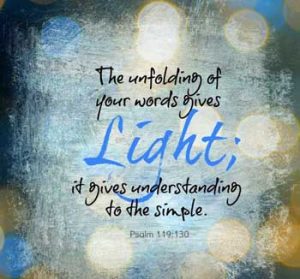In the first decade of my life as a minister I read an article “Little Words of Great Meaning” by Henry Jacobsen in the Christian Life magazine. Conjunctions, prepositions and so on; you know, the “ands” and “buts” and “ins”.
I have in my library the research of one man on the use of the article “a” and “the” in the Greek text! Then I discovered “Figures of Speech” by E.W. Bullinger and he opened up this whole field. Let me give just two examples: Many-Ands and No-Ands. The biblical text is very precise on its usage. When no “ands” are used in a list, we are not to stop and consider the particulars but to hasten on the grand climax. When many “ands” are used there is not climax and we should stop at each point, weight each matter that is presented and consider each particular that is emphasized. (Based on page 208, Figures of Speech by E.W. Bullinger, a book of 1100 pages!).
Bullinger gives many examples, and you’ll need an essentially literal translation to often see these in English. Take Luke 14 where both appear. In verse 13-14a we have no ands: “But when you give a feast, invite the poor, the crippled, the lame, the blind, and you will be blessed…” Here we are not encouraged to consider the plight of those listed but to hurry on to the conclusion “and you will be blessed!”
Later in verse 21 Jesus is giving a story about applying the truth of verse 13. The master of the house arranges a banquet and no one comes. So he says to his servant, “Go out quickly to the streets and lanes of the city, and bring in the poor and crippled and blind and lame…” Here we need to stop and think about each of the people mentioned and how we can minister to them.
And who said the Bible was a dull book!




I was struck at the vastness of the word “in” when reading through Colossians. When God delivered us from the kingdom of darkness and transferred us into the kingdom of his beloved son, that literally took us from one place to another. How far is the realm of darkness from being in the realm of Christ!? It is from one corner of the spiritual world to the other—and God placed us there, IN Christ. That’s as far as a person can go in this life! It’s a long way from a life filled with darkness to a life filled with the fullness of God. Just in that little preposition, “in”!